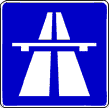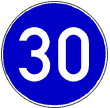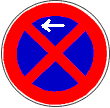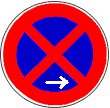

This page is supposed to be about my vacations. I love to travel, but I didn't travel a lot during
the last years. I was in the States with a friend in 1998 and in Eiderstedt, North Sea with
another friend in 2000. I don't have the pictures of those vacations online. Not sure I will
get them back online ever, probably not. So here's what I have for now.
STUTTGART - not many pictures, just some basic info about my favorite city.
WÜRZBURG - a couple of nice pictures and some info too.
IJSSELMEER 2002 - I was sailing in the Netherlands last year.
More to come I hope.
Meanwhile amuse yourself and read my "Dummies Guide to Germany". It's intended for
overseas tourists.
Europeans should be familiar with most of the German habits, mostly because we are a tourist
nation and love to spread our "culture" or what's left of it after half a dozen beers.
All About Driving
1.Driver's License
In my bio I mentioned how complicated it is to receive a driver's license. First of all you
will not receive it until you are 18. You can take the tests before your 18th birthday but I
think you have to be at least 17.
Anyhow, as I said it's kinda complicated. After filling in dozens of papers through which
you apply for a license and the whole process, you start with visiting theory lessons. The
lessons are usually sometime
in the afternoon or at night and in groups of 10-30 people. You can join anytime and the
only thing that matter is that you visit 12 lessons total (at least that's how it was when
and where I made my license). After the first couple of lessons you can ask your teacher
for practical lessons. The regular driver's license entitles you to drive cars
until 3.5t (was 7.5t when I made my license) with no more than 8 additional seats. To obtain
this license you have to
take a total of 12 practical lessons plus the lessons you need to practice with your
teacher until he thinks you are good enough to take those 12 special lessons. Four of them
are to practice on the Autobahn, three in the dark and five cross country. You can take the
theory test anytime after you completed the 12 theory lessons. It's multiple choice but
comparing the german test with the californian test I have to say that the californian one
is laughable. Once you passed the first test and completed the practical lessons you may
take the practical test. It takes one hour, your teacher sits next to you and the examiner
sits behind your teacher and tells you what to do. Part of the test is driving through the
city, backwards and sidewards parking, stop and start driving uphill and sometimes driving
on the Autobahn.
Now for the the fun facts: All driving lessons and the test are made with a car that is
owned by the driving school. During the lessons the teacher has pedals that overrule the
pedals of the driver (i.e. gas, brake and clutch), so the teacher can always correct the
driver. Oh yeah, of course we learn to drive with stick shift!
During
the test an alarm is on and if the teacher helps you or has to correct you during the test the
alarm goes on and you automatically fail. During all lessons there is a "Fahrschule"
(driving school) sign on top of the car and other signs all over the car. But during the test
all those signs are removed, so no one can recognize whether or not it's a driving school.
Of course you have to register for every test seperately and pay seperately. I paid a total of
2000DM, which is around €1000. Today it costs around €1500 and that's if you don't need many
additional driving lessons and pass both tests at first try (which I did).
2. The Autobahn

 Yep, that sign on the left is the one that leads you to our famous Autobahn. And
"Ausfahrt" means exit. Despite different rumors there
are speed limits on the Autobahn. Usually because the street is in bad condition. Guess I just
ruined two myths. The third myth to be ruined is that Hitler did NOT build the Autobahn.
Ok, I have good news. If there is no speed limit then that means exactly that: no speed limit,
meaning you can go as fast as you can (or want). Given that the weather or other drivers don't
force you to go slower.
Yep, that sign on the left is the one that leads you to our famous Autobahn. And
"Ausfahrt" means exit. Despite different rumors there
are speed limits on the Autobahn. Usually because the street is in bad condition. Guess I just
ruined two myths. The third myth to be ruined is that Hitler did NOT build the Autobahn.
Ok, I have good news. If there is no speed limit then that means exactly that: no speed limit,
meaning you can go as fast as you can (or want). Given that the weather or other drivers don't
force you to go slower.
3. Speed Limits and Traffic Signs

 As I said, there are speed limits on the Autobahn and every where else. The so called
"Richtgeschwindigkeit" (recommended speed) for the Autobahn is 130kmh/80.8mph (1kmh=0.621mph).
The speed limit in cities and towns is 50kmh/31.1mph unless there is a "30 Zone" to protect
residents (30kmh/18.6mph). On interstates the speed limit is 100kmh/62.1mph.
As I said, there are speed limits on the Autobahn and every where else. The so called
"Richtgeschwindigkeit" (recommended speed) for the Autobahn is 130kmh/80.8mph (1kmh=0.621mph).
The speed limit in cities and towns is 50kmh/31.1mph unless there is a "30 Zone" to protect
residents (30kmh/18.6mph). On interstates the speed limit is 100kmh/62.1mph.
 The fun thing is that we also have signs with a minimum speed limit as shown on the left!
The fun thing is that we also have signs with a minimum speed limit as shown on the left!

 Across the street from where I live is a US Army Hospital. Even though
the hopital has a huge parking lot and even though there are dozens of parking spaces all around
it, there are not enough. There is a tiny street infront of our house and there are signs that
restrict parking. The street makes a little curve. The first sign on the left shows where this
restriction starts, the second shows where the restriction ends. Guess where
our transatlantic friends love to park each and every day. Yep, right between them! lol And every
other day I see the police coming by and awarding tickets. So if you find a little leaflet
on your car's front window, don't throw it away, could be ticket from our green "friend and
helper".
Across the street from where I live is a US Army Hospital. Even though
the hopital has a huge parking lot and even though there are dozens of parking spaces all around
it, there are not enough. There is a tiny street infront of our house and there are signs that
restrict parking. The street makes a little curve. The first sign on the left shows where this
restriction starts, the second shows where the restriction ends. Guess where
our transatlantic friends love to park each and every day. Yep, right between them! lol And every
other day I see the police coming by and awarding tickets. So if you find a little leaflet
on your car's front window, don't throw it away, could be ticket from our green "friend and
helper".
 This sign has a spelling error. Germans meanwhile spell "stop" with two p = Stopp.
This sign has a spelling error. Germans meanwhile spell "stop" with two p = Stopp.
Shopping
1. Tax
The tax is included. The price you see is the price you pay. Germans like it simple.
Eating Out
1. Tip
The better the restaurant, the higher the tip. 15% is a recommended amount if you were
satisfied with the food and the service. You don't leave the tip at the table, you round
up your bill, meaning you say how much you want to pay.
to be continued







